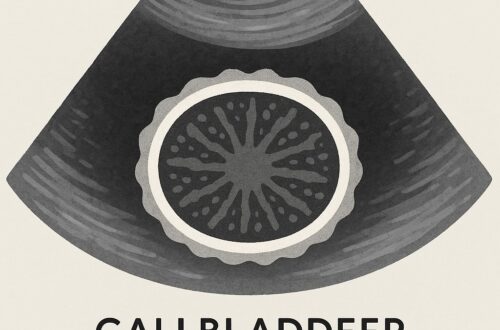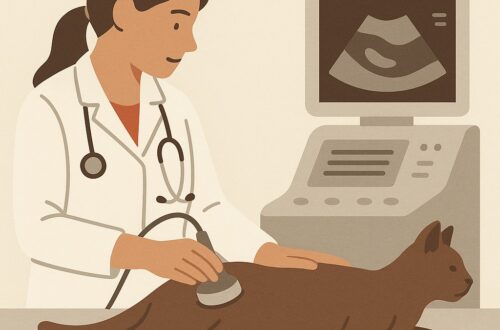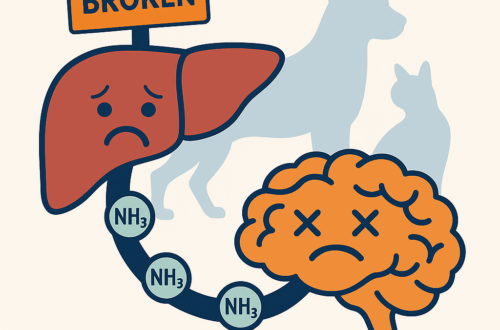In last week’s blog post, I introduced you to the causes and common clinical signs of, as well as diagnostic tests for chronic nasal disease in dogs and cats. To continue our discussion of this topic, this week I review various potential treatments for some frequently encountered chronic nasal diseases.
Nasal infectious disease treatment…
Treatment of an infectious cause of chronic nasal disease is relatively straightforward in most patients. If an infectious organism is confirmed to be the primary cause of a pet’s chronic nasal signs, definitive treatment can be curative. A more challenging aspect of infectious diseases is testing for them – one needs to have an index of suspicion for an infection to think about testing for one. In this regard consultation with a board-certified veterinary internal medicine specialist can be exceedingly helpful to both efficiently identify and subsequently treat appropriately an infectious cause of chronic nasal disease in dogs and cats.
Most primary infectious diseases that cause chronic nasal signs can be treated by medications give by mouth to an affected patient. However a primary fungal infection called sinonasal aspergillosis that occurs primarily in dogs is most effectively treated with infusion of an anti-fungal medication deposited directly into the nasal and sinus passages. Click here to watch a video of rhinoscopy of a dog with sinonasal aspergillosis. Click here to watch a video showing the recommended treatment of a dog with sinonasal aspergillosis.
Nasal foreign bodies…
Nasal foreign bodies are relatively infrequent causes of chronic nasal disease, particularly in cats. Blades of grass are the most common objects that get stuck inside the nose, but seeds and grass awns have also been found. Foreign bodies most frequently become lodged in the back of nasal cavity because the foreign material is ingested and then either gagged or vomited into the back of throat and subsequently into the back of the nasal cavity.
Flushing the nose with a large volume of saline often frees smaller objects like seeds, dislodging them so they are no longer a problem. The use of rhinoscopy to visualize and subsequently remove a foreign object with specialized forceps/graspers is often needed. Less commonly a surgery called a rhinotomy is required for patients who develop a lot of scar tissue or who have foreign bodies that can’t be directly removed with flushing or rhinoscopy. Click here to see a video of a blade of grass being removed from the nose of the dog using rhinoscopy.
Chronic nasal inflammatory polyps…
Inflammatory nasal polyps, also called nasopharyngeal polyps, most commonly arise from the middle ear and grow down the auditory tube (aka: Eustachian tube) to the back of the nose and throat (nasopharynx). They occur predominantly in kittens and young cats, and rarely occur in dogs.
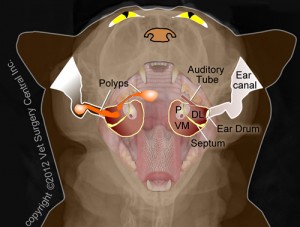
These polyps are commonly removed by gently applying traction to them. Unfortunately with this method recurrence is relatively common and thus the true benefit of the traction technique has been called into question. Many board-certified veterinary internal medicine and surgery specialists advocate for computed tomography (CT scan) prior to surgery to definitively determine if the middle ear is involved. If it is, a surgery called a bulla osteotomy is recommended and consultation with a board-certified surgeon will likely be invaluable. Certainly if a polyp recurs following traction avulsion, a bulla osteotomy is always recommended to allow for complete removal of the origin of the polyp. Click here to a see a video of a nasopharyngeal polyp being removed using the traction technique.
Chronic “allergic” nasal inflammation…
Chronic rhinitis is typically a disease that is controlled rather than cured. Many dogs and some cats benefit from administration of antihistamines (i.e. ceterizine/Zyrtec) to reduce swelling inside the nose and nasal secretions. Antibiotics may be prescribed to control secondary bacterial infections. Therapy with immunosuppressive medications given by mouth and/or by inhaler can be helpful in some patients, but these drugs should be used cautiously as they may exacerbate viral and secondary bacterial infections.
Cats with chronic “allergic” rhinitis who have a history of herpes virus infection may benefit from a number of possible medications, including:
- L-lysine
- Probiotic therapy (i.e.: Fortiflora)
- Antiviral drugs (i.e.: famcyclovir/Famvir)
- Interferon therapy (i.e.: feline interferon omega)
- Immunotherapy (i.e.: vaccination against herpes virus I directly administered in the nose)
Dogs and cats with chronic “allergic” nasal inflammation frequently also benefit from non-specific therapies, particularly:
Hydration: It is important for a pet to stay well hydrated so nasal secretions do not become thick and difficult to clear. Humidification of air by steam or by instilling saline into the nostrils is beneficial to stimulate sneezing to clear the nasal passages.
Decongestants: Just as in people, the use of decongestants can be helpful to reduce tissue swelling inside the nose. There are multiple different types of decongestants; some are administered by mouth and others can be given directly into the nose. In some patients more than one type of decongestant is needed.
Anti-inflammatory drugs: Anti-inflammatory drugs (i.e.: non-steroid anti-inflammatory medications/NSAIDs, corticosteroids) may reduce swelling that is present in the nasal passages. By reducing nasal swelling, an affected patient is more comfortable because s/he produces fewer nasal secretions and breathes with more ease. Corticosteroids, NSAIDs and medications called leukotriene antagonists/blockers are all possible options, but please know NSAIDs prescribed at anti-inflammatory doses and corticosteroids should not be used together – for more information, please click here.
As you can see, treatment for chronic “allergic” nasal inflammation requires a multifactorial approach and can be complicated. Consultation with a board-certified veterinary internal medicine specialist can be beneficial for picking the most effective treatment combination.
Nasal cancer…
Treatment of nasal cancer in dogs and cats continues to progress almost daily, thanks in part to ground-breaking research conducted by cancer scientists and board-certified veterinary oncologists. We are learning new treatment techniques to improve the quality of lives of cancer patients all the time, including those living with nasal tumors. To date, cancer treatment modalities for nasal cancers be divided into several categories:
Radiation therapy – Radiation therapy utilizes intense beams of energy to kill cancer cells; the power for radiation therapy comes from x-rays, protons or other types of energy like gamma rays. The radiation may be delivered by a machine outside the body (called external beam radiation therapy) or by radioactive material placed in the body near cancer cells (called internal radiation therapy or brachytherapy). Given the requirement for unique and very specialized equipment, radiation therapy should be delivered by a board-certified veterinary radiation oncologist.
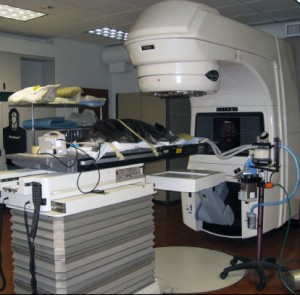
A patient may receive radiation therapy before or after a surgical procedure surgery, depending on the type of cancer being treated. Additionally some patients only need radiation therapy, while others need both radiation therapy and chemotherapy.
Stereotactic radiosurgery – Stereotactic radiosurgery (SRS), sometimes called stereotactic radiation therapy, is a uniquely precise form of radiation therapy that can be used to treat nasal tumors in dogs. Despite its name, SRS is not a surgical procedure, but rather it is a form of therapy that delivers precisely-targeted radiation at much higher doses in only a single or few treatments as compared to traditional radiation therapy. This treatment is only possible due to the development of highly advanced radiation technologies that permit maximum dose delivery within the target while minimizing the dose to the surrounding healthy tissue. The goal is to deliver doses that will destroy the tumor and achieve permanent local control.
Chemotherapy – One of the hallmark features of cancer cells is their ability to grow exceedingly fast; thus it is logical that anti-cancer drugs or chemotherapy target cells in the body that grow quickly. There are many different types of chemotherapy drugs available, and they may be given alone or in combination to treat a wide variety of cancers.
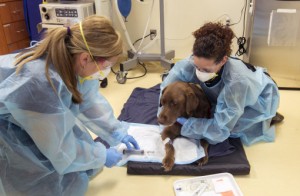
Although there are potential side effects of chemotherapy, treatment in dogs and cats is a much friendlier process for dogs and cats.
I encourage all pet parents to meet with a board-certified veterinary oncologist if their dog or cat has been diagnosed with a cancer to determine if their pet may benefit from chemotherapy.
Surgery – A surgical procedure may be beneficial to help reduce the size of a tumor in the nose after or before other treatments like chemotherapy and/or radiation therapy.
Hospice care – Pet parents sometimes decide keeping their pet as comfortable as possible until it is time to say goodbye is the best course of action. There is absolutely nothing wrong with this decision (as long as it is a well-informed one), as other interventions discussed earlier may not be financially feasible or a family may not want to ask their pet to undergo such therapies. For these scenarios, veterinary care is focused primarily on the comfort of the pet, and accordingly hospice care revolves around the client-patient-doctor relationship.
The take-away message from Part II…
After figuring out the definitive trigger of chronic nasal signs in a dog or cat, one must then initiate therapy to help improve clinical signs and hopefully cure the primary problem. Unfortunately for many causes of chronic nasal disease, a cure isn’t possible, and thus one must treat an affected patient long-term with various medications. Partnering with a board-certified veterinary internal medicine specialist or cancer specialist can be truly beneficial to ensure a pet is being treated as appropriately as possible.
To find a board-certified veterinary internal medicine specialist or cancer specialist, please visit the American College of Veterinary Internal Medicine.
To find a board-certified veterinary radiation oncologist, please visit the American College of Veterinary Radiology.
To find a board-certified veterinary emergency and critical care specialist, please visit the American College of Veterinary Emergency and Critical Care.
Wishing you wet-nosed kisses,
cgb


